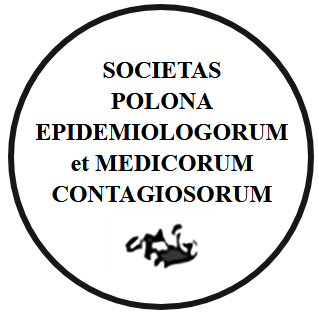PRACA ORYGINALNA
Impact of smokeless and smoking tobacco on subgingival microbial composition: A comparative study
1
Department of Public Health Dentistry, Government College of Dentistry, Indore, India
2
Department of Dentistry, District Hospital, Madhya Pradesh, India
Data nadesłania: 09-12-2024
Data ostatniej rewizji: 23-03-2025
Data akceptacji: 04-04-2025
Data publikacji online: 24-04-2025
Autor do korespondencji
SŁOWA KLUCZOWE
DZIEDZINY
STRESZCZENIE
Background: Environmental perturbations such as tobacco use causes increased bacterial diversity in the subgingival microbiome. Despite the recognized impact of tobacco on oral health, there is a notable gap in the literature regarding the specific characteristics of the subgingival microbiome among Indian tobacco users. Objective: This study seeks to provide a comparative analysis of subgingival microbial profile of smokeless tobacco users and smokers with an otherwise healthy periodontal environment. Material and methods: This cross-sectional study at a Tertiary Dental Hospital in India recruited 118 participants: 52 non-tobacco users (Group 1), 36 smokeless tobacco users (Group 2), and 30 smokers (Group 3). Subgingival samples were collected from mesial surfaces of teeth (16, 46) using sterile paper points and analysed via the streak plate method for bacterial profiling. Clinical examinations assessed oral hygiene, gingival, and periodontal health using indices: Bleeding on Probing (BoP), Pocket Depth (PD), and Approximate Plaque Index (API). Categorical variables were analysed using the Chi-square test, and odds ratios were calculated. Results: Gender distribution was 76.3% male and 23.7% female (p < 0.05). Group 2 had a significantly higher prevalence of gram-positive cocci (100%) and gram-negative coccobacilli (94.4%) compared to Group 1, with a 12.4 times increased risk for gram-negative coccobacilli (p < 0.05). Group 2 also showed a higher occurrence of Aggregatibacter (88.9%) and a 3.5 times increased risk (p < 0.05). Group 3 exhibited significantly more gram-positive cocci and gram-negative coccobacilli than Group 1, with 3.8 times and 4.7 times increased risks, respectively (p < 0.05). Rothia species were significantly more common in smokers (13.3%) than non-tobacco users (0%) (p < 0.05). Conclusions: Despite the absence of periodontal disease, the elevated presence of Aggregatibacter, Enterococcus, Klebsiella, and Rothia species indicates a shift towards increased bacterial diversity and a higher risk of future periodontitis.
Udostępnij
ARTYKUŁ POWIĄZANY
Przetwarzamy dane osobowe zbierane podczas odwiedzania serwisu. Realizacja funkcji pozyskiwania informacji o użytkownikach i ich zachowaniu odbywa się poprzez dobrowolnie wprowadzone w formularzach informacje oraz zapisywanie w urządzeniach końcowych plików cookies (tzw. ciasteczka). Dane, w tym pliki cookies, wykorzystywane są w celu realizacji usług, zapewnienia wygodnego korzystania ze strony oraz w celu monitorowania ruchu zgodnie z Polityką prywatności. Dane są także zbierane i przetwarzane przez narzędzie Google Analytics (więcej).
Możesz zmienić ustawienia cookies w swojej przeglądarce. Ograniczenie stosowania plików cookies w konfiguracji przeglądarki może wpłynąć na niektóre funkcjonalności dostępne na stronie.
Możesz zmienić ustawienia cookies w swojej przeglądarce. Ograniczenie stosowania plików cookies w konfiguracji przeglądarki może wpłynąć na niektóre funkcjonalności dostępne na stronie.




